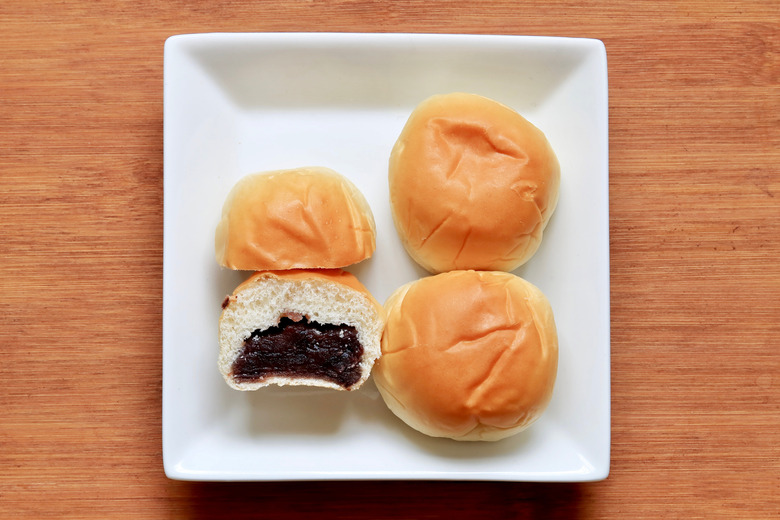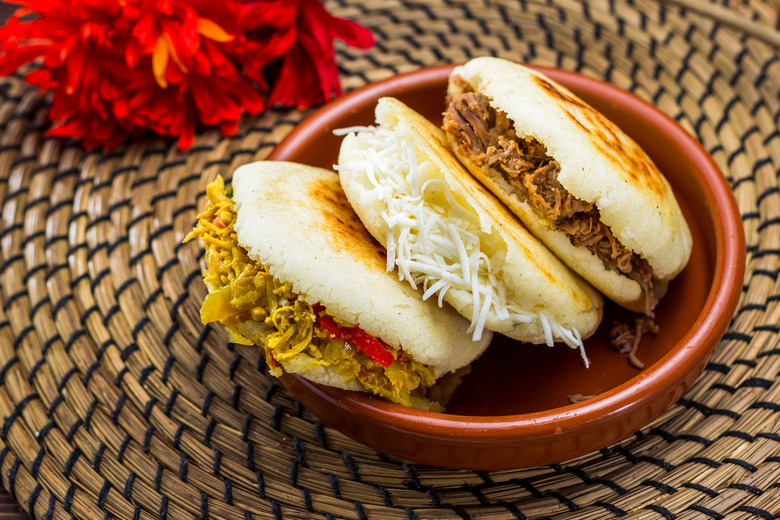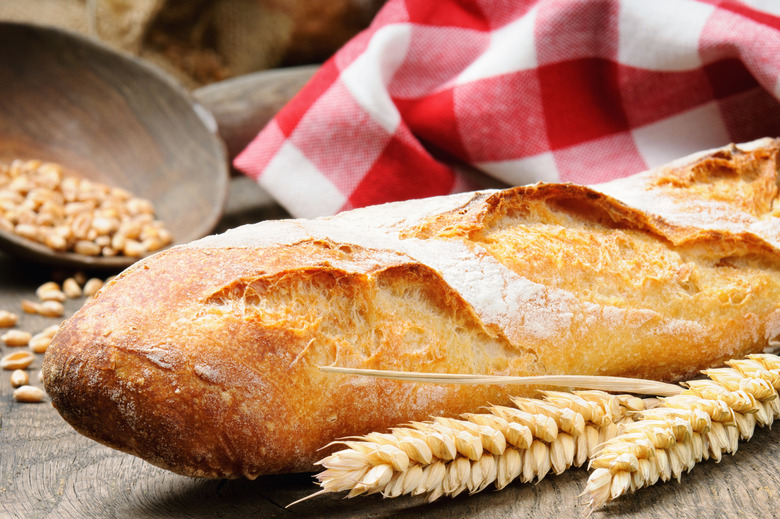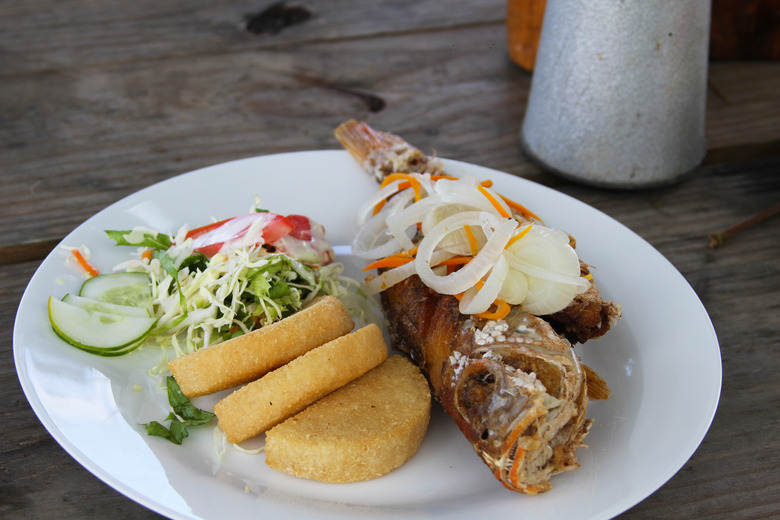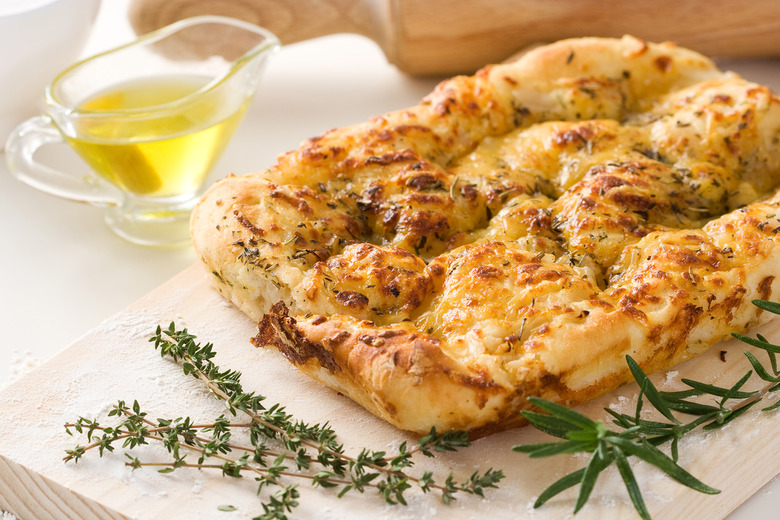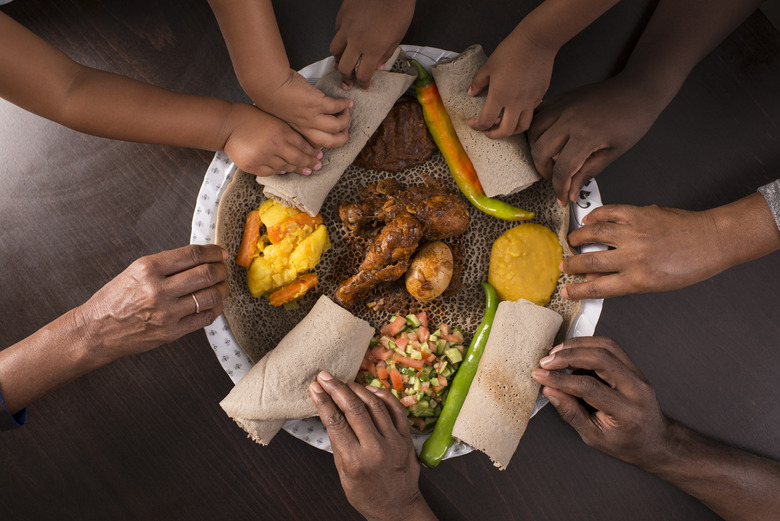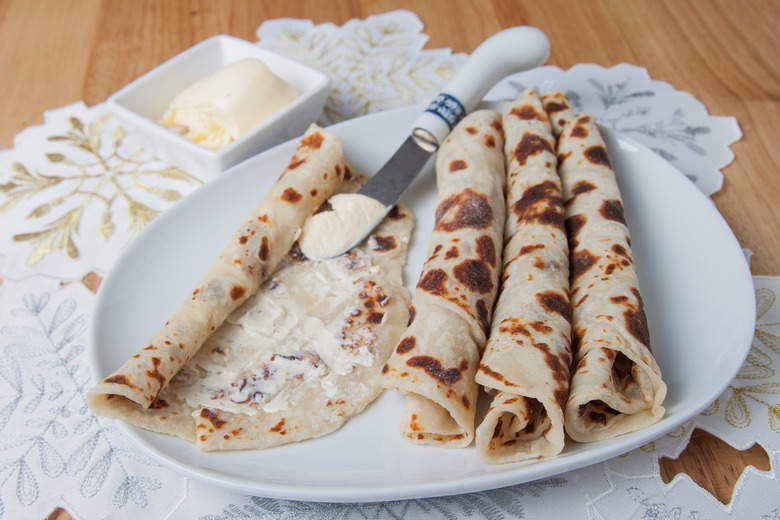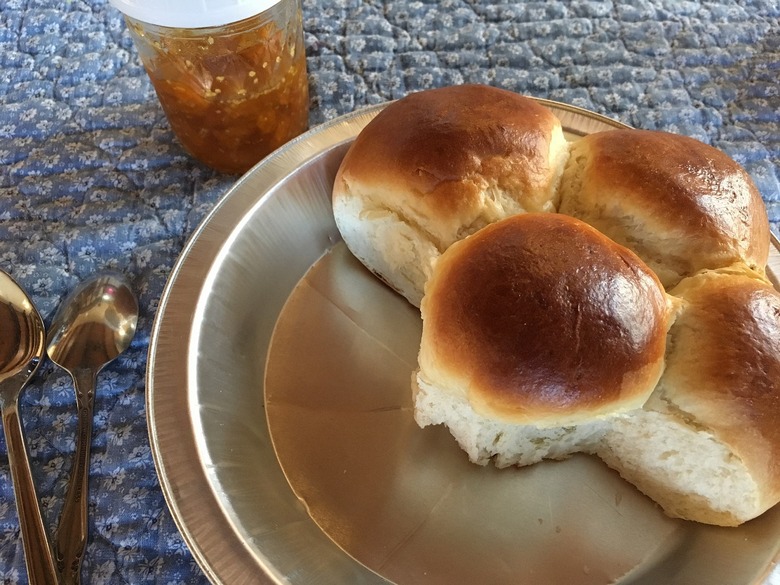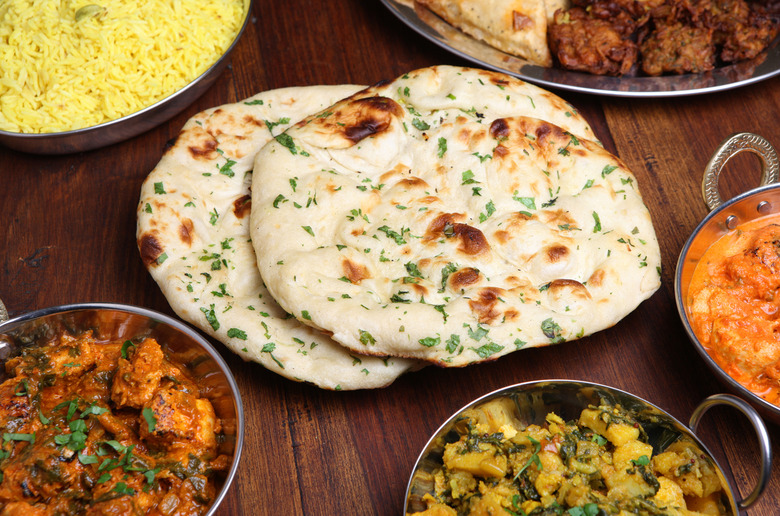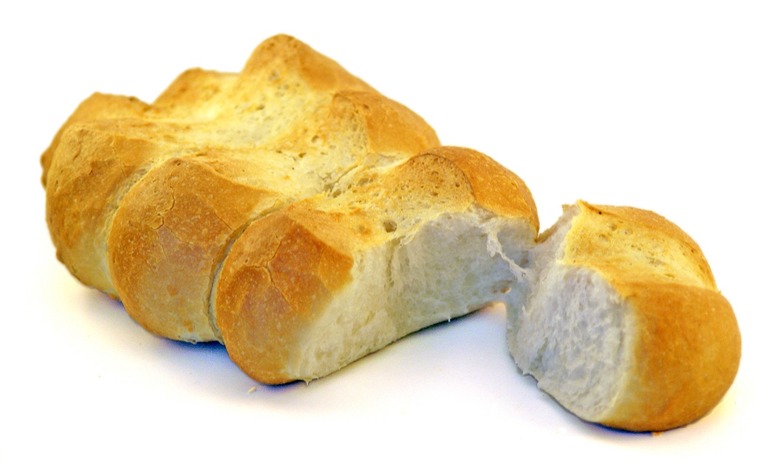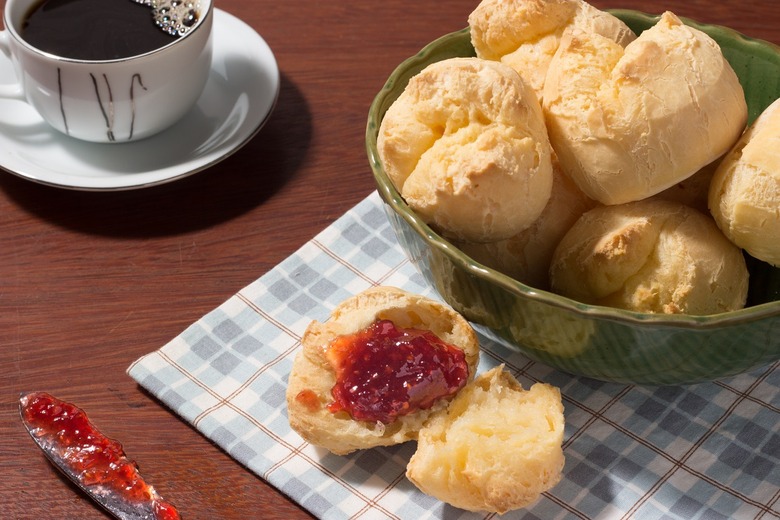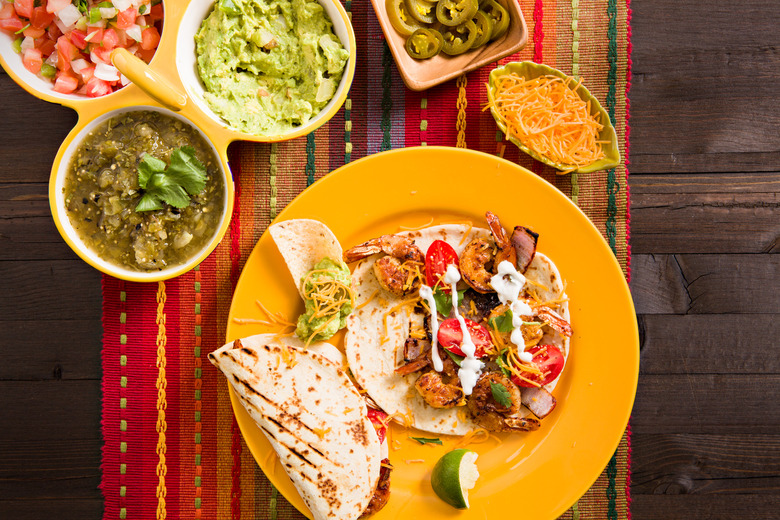Bread Around The World: From Baguettes To Naan Gallery
Bread is one of those foods that brings the world — and your dinner table — together. One of the oldest artificial foods in the world, it's been a staple in human diets since agriculture was a thing. You can make bread out of all types of flours and with all kinds of ingredients, resulting in endless variants throughout the world. Bread is generally associated with hospitality, and it's affordable, which is why you'll find it served at most restaurants and in nearly every culture on the globe.
Contrary to the bad rap it's gotten in recent years, bread isn't bad for you. Easy to transport and a great source of carbohydrates and nutrients such as iron, magnesium, vitamin B, and dietary fiber, it's a supremely important food that deserves to be appreciated in all its iterations. So forget those myths you heard about gluten and chow down on these amazing breads from around the world, from baguettes in France to South Asian naan.
Elsa Säätelä contributed to this article.
Anpan (Japan)
Anpan is a sweet roll originating in Japan. It usually has a red bean paste filling, but it can also be made with other fillings such as pastes made from chestnut, sesame, green beans, or white beans.
Arepa (Colombia, Venezuela)
Arepas are a staple in the Colombian and Venezuelan diets. These soft, thick patties are made with either ground maize kernels, maize flour, or maize meal, which is then mixed with water and salt, as well as sometimes butter, eggs, milk, or oil. Baked, boiled, fried, grilled, or steamed, arepas can vary in size, flavor, and color, and very often are stuffed or tipped with meat, cheese, eggs, tomatoes, or salad, or even eaten plain as a side to a meal. Arepas can also be split to serve as the bread of a sandwich, and are often served with cheese, avocado, or cuajada, a type of milk curd.
Baguette (France)
The baguette is an icon of France, so much so that the basic lean dough used to make it is dictated by law. Made with wheat flour, yeast, water, and salt, a typical baguette is a little over two feet long with a diameter of about two inches and has a nice, crispy crust with a light, fluffy interior. In France, they are traditionally used for sandwiches or sliced up to be served with cheese and pâté or — if it's breakfast time — spread with jam and butter, to be dunked in coffee or hot chocolate.
Bammy (Jamaica)
The Jamaican bammy, or bami, is a thick flatbread made from cassava, a starchy tree root that is grated and pressed until it is almost entirely drained before being turned into fine flour and salted before being baked. Bammies can be eaten alone as a snack or served with a meal.
Focaccia (Italy)
Focaccia is a type of Italian bread made out of high-gluten flour, oil, salt, water, and yeast. Rolled or pressed into a thick layer, focaccia is traditionally baked in a stone-bottom or hearth oven, and its distinctive texture comes from the common practice of poking the bubbles forming in the bread. Olive oil is spread on the dough before rising and baking, as well as after in order to season it along with salt. Focaccia is often topped with herbs and other ingredients, such as cheese or onion. It can be served as an appetizer, side, snack, or sandwich bread.
Injera (Horn of Africa)
The national dish of Djibouti, Eritrea, Ethiopia, and Somalia, injera is a vital part of the dining table in the Horn of Africa. It is made with teff (a type of grass native to the region) flour that is mixed with water and, after being left to ferment for several days, baked into large and thin pancakes. Different salads and stews will be placed in the middle of the injera, of which small pieces are torn off by hand and used to scoop up the food.
Lefse (Norway)
Lefse is a Norwegian flatbread traditionally made with potatoes and flour, as well as butter and milk or cream. A special wooden stick and grooved rolling pin is used to prepare the dough, which is then cooked on a flat griddle. Usually flavored with butter and rolled up, lefse can come in other forms as well, such as rolled up into a ball, flavored with cinnamon or sugar, or spread with jelly or other traditional Norwegian condiments. Traditionally eaten with lutefisk, which is usually rolled up inside it, lefse can also be eaten with other meats or condiments such as mustard and sour cream.
Massa Sovada (Portugal)
Also known as Portuguese sweet bread, massa sovada is, well, a Portuguese sweet bread made with milk, sugar, flour, yeast, and eggs, as well as sometimes honey and lemon peel, depending on the recipe. Baked in a stone even, it's traditionally made at Christmastime, and an Easter variant (known as folar) will often have a hard-boiled egg inside.
Naan (South and Central Asia, Middle East)
Originating in the Indian subcontinent and Central Asia, naan is traditionally associated with Indian and Pakistani cuisine but is found throughout Central and South Asia, as well as the Middle East. Made with wheat flour, water, and traditionally ghee (but sometimes butter), as well as sometimes yogurt or milk, naan is traditionally cooked in a tandoor oven, an essential tool in South Asian cooking. Brushed with ghee or butter and served hot, naan is meant to be used to scoop up other foods, particularly curries, although it can have a filling as well.
Pane Ticinese (Switzerland)
Pane ticinese originates in the Swiss canton of Ticino but is eaten throughout Switzerland. A white bread, pane ticinese is particularly soft and has a distinctive shape; it's made up of smaller rolls that can be easily broken off – perfect for sharing.
Pão de Queijo (Brazil)
Small and round cheese-stuffed buns, pão de queijo are breakfast staples in Brazil, as well as a popular snack. Like Jamaica's bammy, pão de queijo is made with cassava flour. The dough is rolled into small balls that are stuffed with cheese, which can be any kind but is usually Minas cheese.
Tortilla (Mexico)
Originating in Mexico yet also very popular throughout Central America and the United States, the tortilla is an unleavened flatbread that can be made from corn or wheat flour. This versatile bread is used to make tacos, quesadillas, burritos, and all kinds of Tex-Mex dishes as well. Before you go rushing out the door to track any of these breads down, however, here are some things you need to know before you buy your next loaf of bread.

